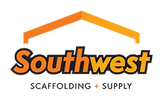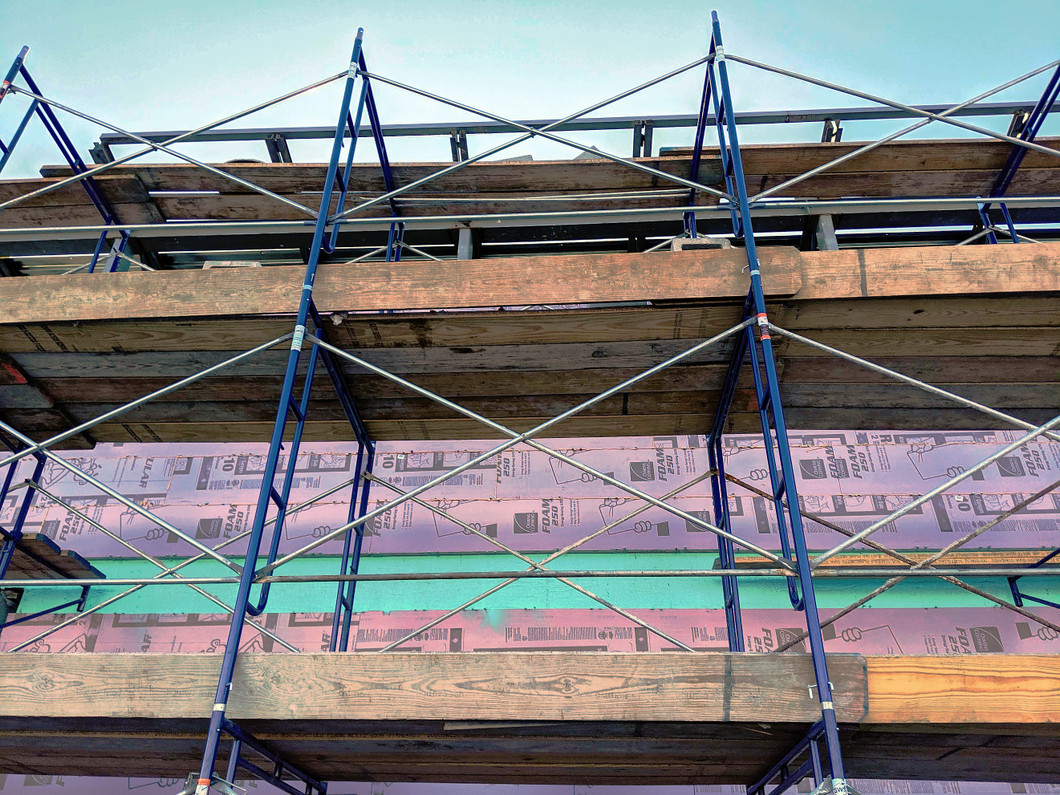Scaffold Planks and Boards Which One Should you use?
At one time, the only type of scaffold boards and planks we could use were wood-made, and even the fabricated metal planks are sometimes still called boards on the job site. Today though, we have a variety of materials that we can use, and depending on our frames and the job we are on, one type may be better than another for specific applications. Today we are going to go over the kinds of planks we use for decking and the advantages and disadvantages of each one.
Scaffolding Wood Planks
We will start with the oldest and most common scaffolding plank, wood. Wood planks or boards should always meet OSHA requirements whether you are on a commercial job or not, and they can be laminated or sawn. Osha-approved boards are made from yellow pine and treated. They will be 2" high and 10" wide and come in lengths of 8',12', or 16.' OSHA-approved boards will be stamped with OSHA on the sides. Most manufacturers of OSHA boards will also have their names stamped on the board. I often request my company name or logo stamped on them for identification. Remember, nothing can be painted on the boards to obscure them besides flame retardant and slip protection. One exception to that rule is marking pain on the ends of the board.
Advantages of Wood Planks for Scaffolding:
- Cost effective: Wood boards are cheaper.
- Thermal Properties: They do not generate or retain heat which is especially helpful in hotter climates and the summertime.
- Non-Conductive: They do not conduct electricity.
- They can be overlapped to make the deck longer as needed.
- They can be cut.
- They can be notched.
- They can be carried and lifted by one person.
- They can be nailed and screwed as needed.
Disadvantages of Wood Planks for Scaffolding:
- Flexibility: They can be very flexible, which can cause bouncing and shifting.
- Width Limitation: Unless you have many of them width is limited.
- Maintenance: Proper inspection and maintenance must be done constantly.
- Boards must be stored out of the elements to prevent warping and rot.
- Moisture Absorption: Even though they are treated, they will absorb water, become heavier, and possibly reduce their weight limit.
- Limited span and strength.
- Flammability: Highly flammable unless chemically treated, and treatment reduces strength.
- Overlapping of boards creates a trip hazard.
Scaffolding Composite Boards and Planks
The composite board is engineered with wood and plastic or resin materials; sometimes, it is called engineered board. The boards are heated at high temperatures.
Advantages of Composite Boards for Scaffolding:
- Lightweight: They are light and easily handled.
- Durable: Does not rot like wood or rust like metal.
- Low Maintenance: They last longer with less maintenance than wood.
- Non-Conductive: They do not conduct electricity,
- Fire Resistant: They are fire resistant.
- They do not retain heat.
- If they are hooked (most are), there is no trip hazard.
- Non-Slip: They are non-slip.
- Stiffness: Stiffer than wood with less bounce.
Disadvantages of Composite Boards for Scaffolding:
- Cost: The cost is higher initially.
- Fastening: It cannot be nailed or screwed.
- Temperature Sensitivity: They cannot be used in extreme heat or cold.
- They are relatively new and have not been tested long-term.
- They cannot be overlapped.
- They cannot withstand high impacts.
Fabricated Planks
Fabricated platforms are made of plywood with a metal frame. You can also get them in full aluminum.
Advantages of fabricated Platforms for Scaffolding:
- Load Capacity: They can hold more weight than wood or composite.
- Low Maintenance: Less maintenance is required, especially if they are all metal.
- Fire resistant.
- Stiffness: They are stiff with no bounce.
- Moisture Resistance: They are moisture-resistant.
- Handling: They can be moved and handled easier.
- Width: Wider than wood.
- No trip hazard.
Disadvantages of fabricated Platforms for Scaffolding:
- If it is wood and metal, mixed treatment of the wood can cause the deck to be weaker.
- Durability: Aluminum can be damaged easily.
- Length Limitation: They are only one length and cannot overlap.
- They cannot be nailed or screwed.
- Cost: High cost
- They cannot be cut.
- Limited lengths are available.
Metal boards
These boards are often made of steel but can also be aluminum. Metal boards come in similar lengths and widths as wood boards.
Advantages of Metal Boards for Scaffolding:
- Sturdiness: They are sturdy and less stiff than wood.
- Moisture Resistance: They cannot absorb moisture.
- Load Capacity: They can carry more weight.
- Fire Resistance: Fire resistant without chemicals.
- Handling: Easy to handle.
- There are no trip hazards.
Disadvantages of Metal Boards for Scaffolding:
- Length Limitation: They come in one length and cannot overlap.
- Fastening: They cannot be nailed or screwed.
- Cost: High initial cost.
- They cannot be cut.
These are some things to remember when deciding what type of scaffolding you need. Are you going to rent or buy? What trade are you in? What application are you using them for? What attributes of each type are most important to me? Remember to consider how you will store the planks and how long you will need to store them. Also, think about long-term maintenance and costs. If you are in doubt or have questions, you can always ask Southwest scaffolding for help deciding.
Recent Posts
-
10 Times Scaffolding Stole the Show in Movies
Iconic Scenes Where Steel Pipes Became Supporting Actors Scaffolding might not be the first thing t …Jul 14th 2025 -
Top 5 Myths About Scaffolding – Busted!
Don’t Let These Common Misconceptions Slow Your Project Down At Southwest Scaffolding, we hear …Jun 30th 2025 -
What Happens to Old Scaffolding?
A Peek Into Recycling, Reuse, and Creative Upcycling Ideas Introduction: Scaffolding doesn’t l …Jun 28th 2025




